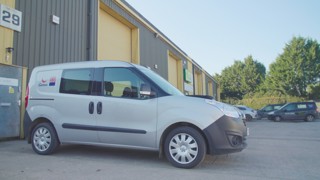The Drivers’ Lottery paid out in excess of £50,000 to more than 16,000 fleet drivers in 2020 and this year it is planning to triple the amount of cash it pays out.
Working in conjunction with Lightfoot’s in-cab driver training device, it aims to encourage drivers to adopt a smoother, safer, and more eco-friendly style of driving.
“Vehicles aren’t the solution to reducing pollution, accidents and excessive fuel use on our roads, drivers are,” said Mark Roberts, founder and CEO of Lightfoot.
“Even a vehicle that has the latest eco-technology can’t be efficient if driven inefficiently. But a good driver can transform a dirty gas guzzler, slashing emissions through smoother driving.”
Commenting on the future of the Drivers’ Lottery, Roberts added: “We are not just talking more and bigger cash prizes. I also want to introduce big giveaways like a Tesla every week.”
Lightfoot’s technology is used in thousands of vans in the delivery sector, ranging from micro-fleets to some of the UK’s largest grocery delivery fleets, including Tesco and ASDA. It has also been adopted by some company cars fleets.
Vehicles are fitted with a small dash-mounted device that plugs into the engine and feeds back live to the driver to help them keep within the ‘sweet spot’ of their engine.
Combined with a benefits and rewards platform which is accessed via an app, drivers are encouraged to achieve ‘Elite Driver’ status each week, which unlocks access to the weekly Drivers’ Lottery cash draw.
With a one in 10 chance of winning, and 80% of entrants having already won a cash reward, The Drivers Lottery is helping Lightfoot to achieve high levels of engagement, it says.
Phillip Morton, principal risk consultant at Aon, said: “The Drivers’ Lottery genuinely gives back to drivers for doing their bit. It is in their interests to drive more safely and efficiently, meaning they are self-managing.
“We at Aon have seen this deliver benefits in fuel savings, managing risk and lowering emissions for our clients. It also leads to lower claims values and claims frequencies, which is good news for the insurance sector.”






















Login to comment
Comments
No comments have been made yet.